Street life in Kyrkyzstan
Don’t worry: no urbanity lesson taught here. Just a few glimpses on street life to reveal interesting facets of Kyrgyz society.
Cities are not a priori where Kyrgyz people would feel well considering their nomadic origin. But times are changing. It is striking to observe how much the young urban generation is tuned to the world with Russia, USA and maybe also China as main reference points. This is particularly true in the Kyrgyz capital Bishkek and much less in Osh, the second largest city in the country.
Kyrgyz society is indeed not monolithic. Nation building is under way between the Northern and southern part of the country, between people of Kyrgyz, Uzbek, Russian, German and Tajik origin, just to name the main division lines. Just remember that Kyrgyzstan was made independent in 1991 only after centuries of Mongol, Chinese and Russian rule.
Bishkek, Northern Kyrgyzstan
Bishkek reflects the challenges, the ambitions and the promises of a young nation. It is a large but also a surprisingly green city with many and large parks. As everywhere in the world, these are privileged places for mmen to spot their female counterparts. Squares and places are many and ample, displaying the pantheon of Kyrgyz nation-builders. Manas, Kyrgyzstan’s mythical hero, parades on his horse in the main square of the capital.
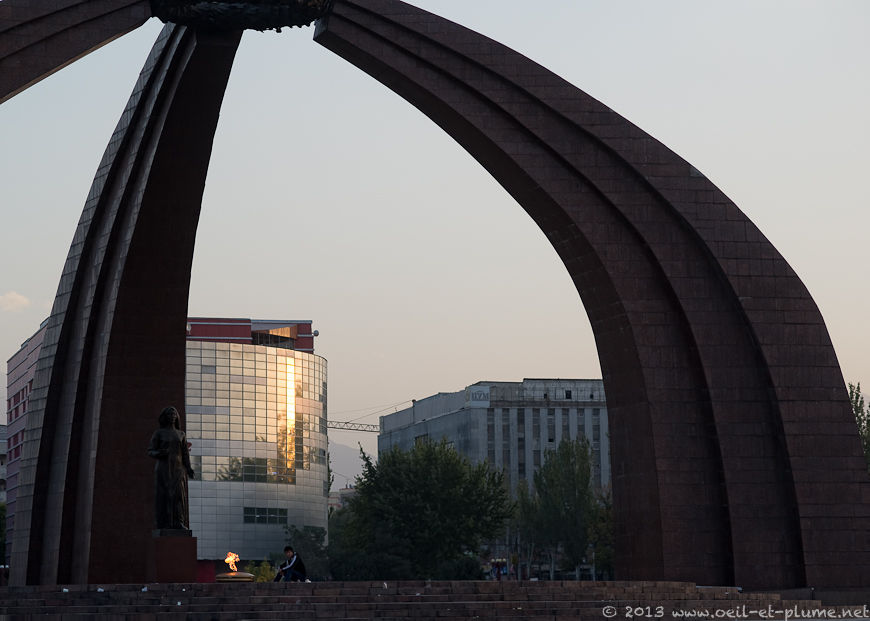
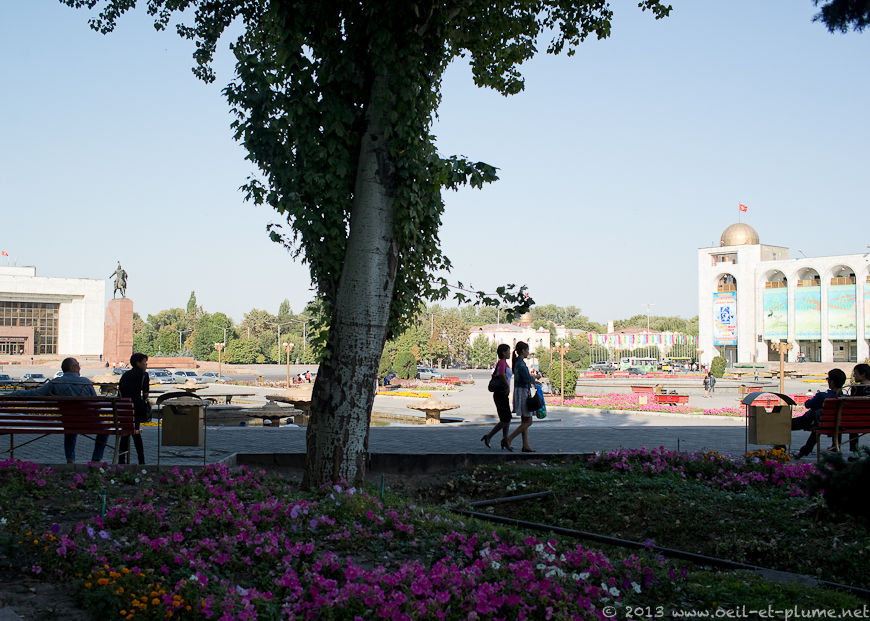
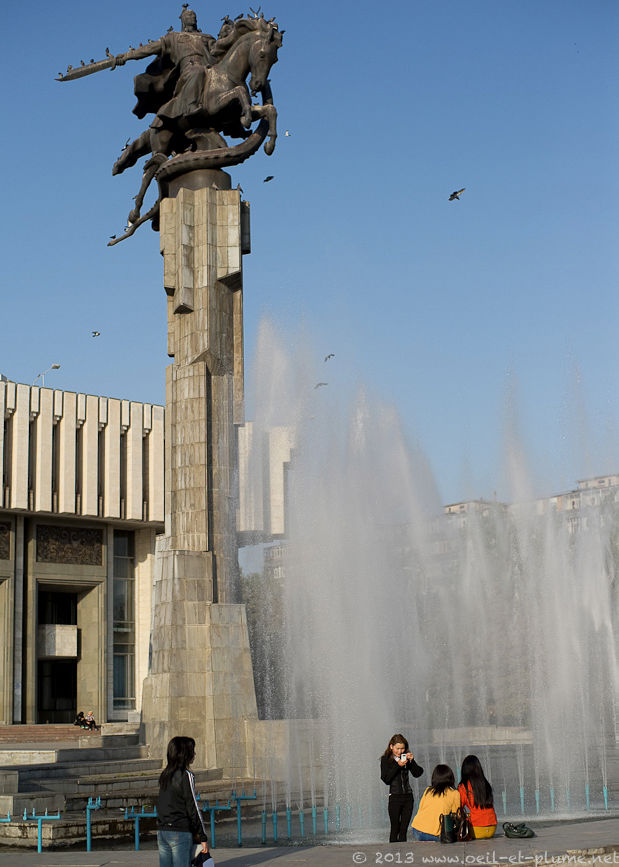
On my first day in Bishkek, I was lucky enough to come across a double street festival that well reflected the profound inter-generational changes under way.
On one side of the main avenue, senior people dressed up in beautiful traditional outfit celebrate the national day of the elderly as I was told.

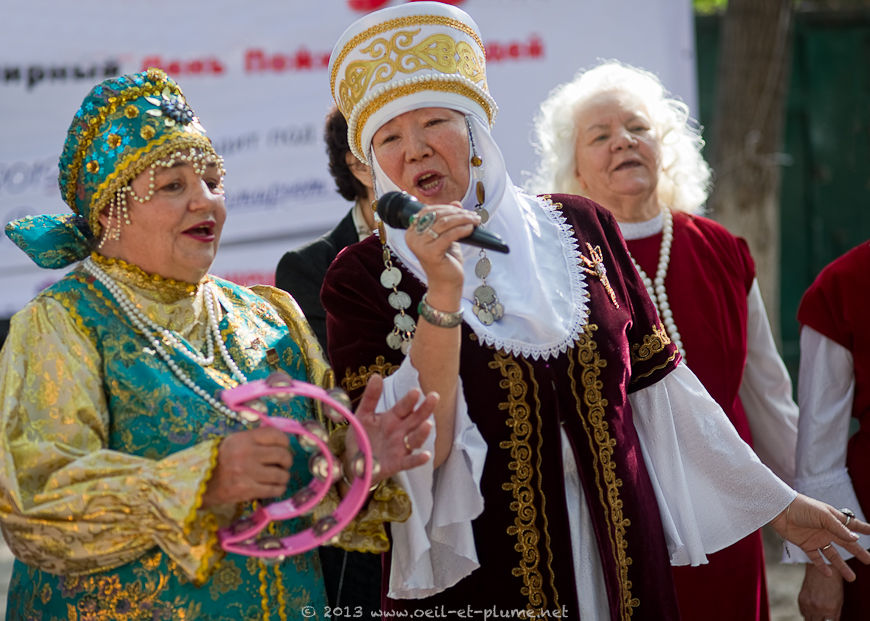
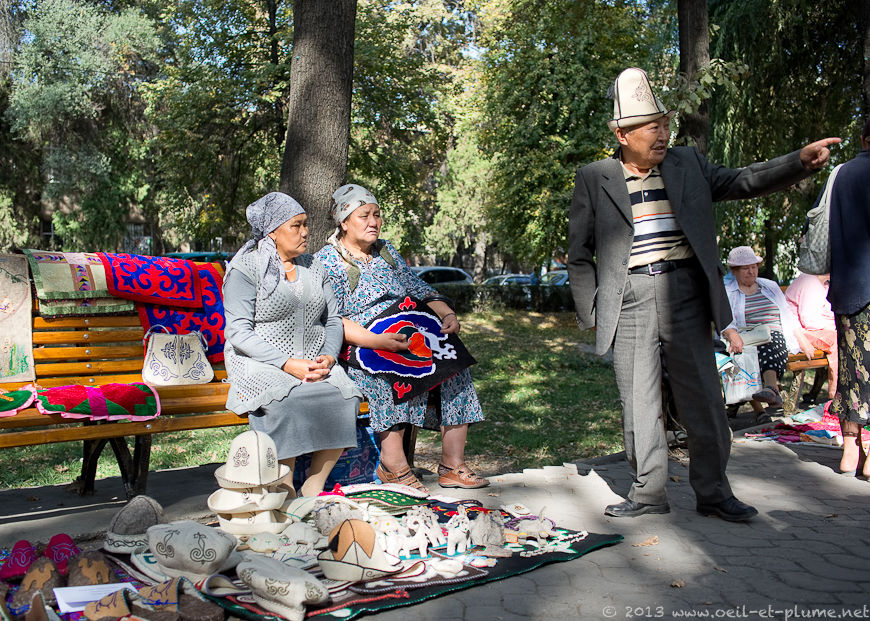
On the opposite side of the street, a vibrant musical and dancing show run by Kyrgyz youngsters drag scores of bystanders. Easy to understand why. Their joy and their dynamism are compelling and communicative.
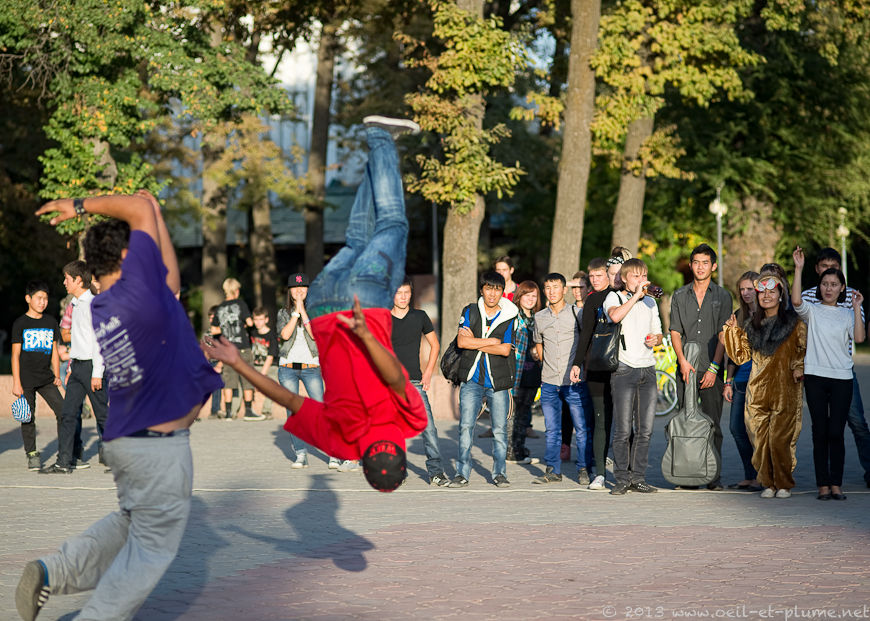
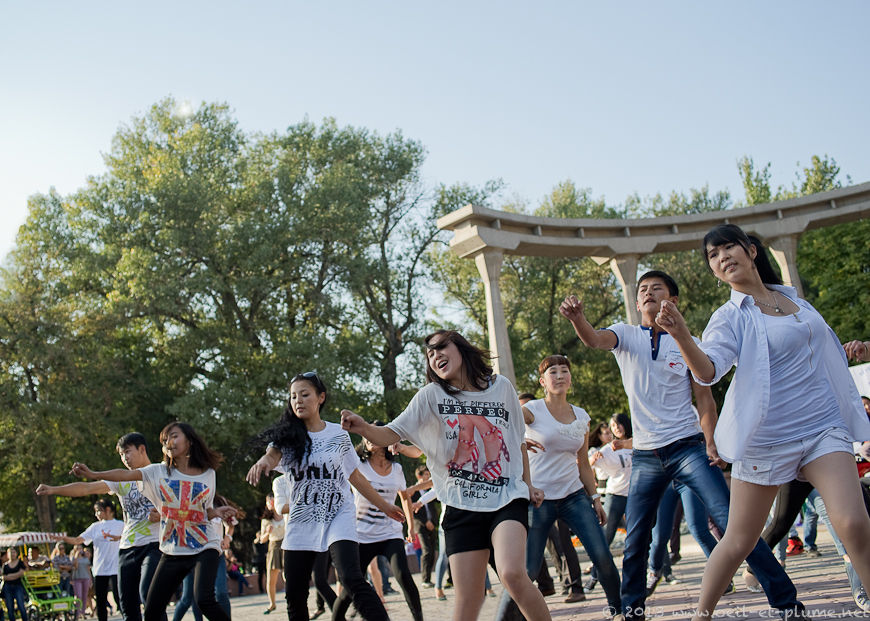
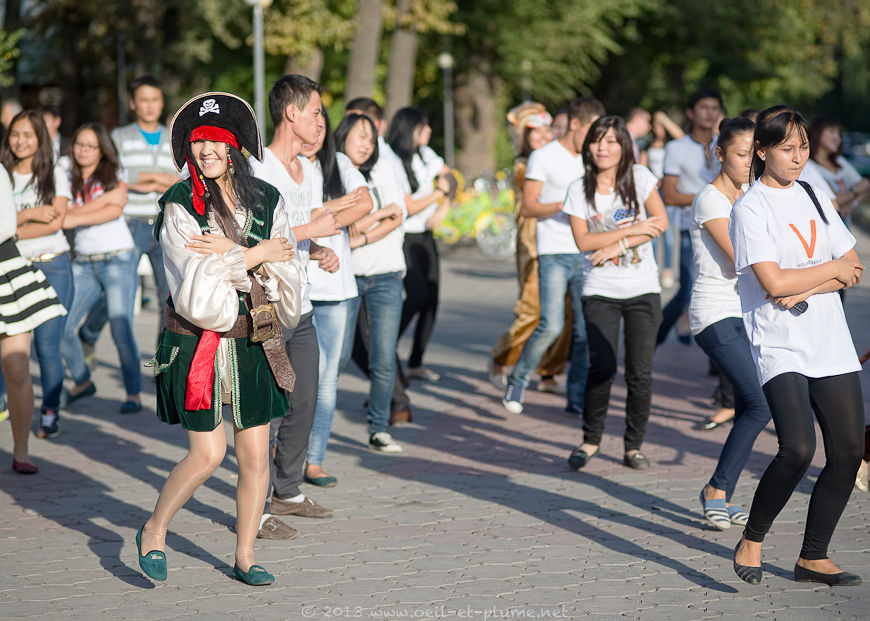
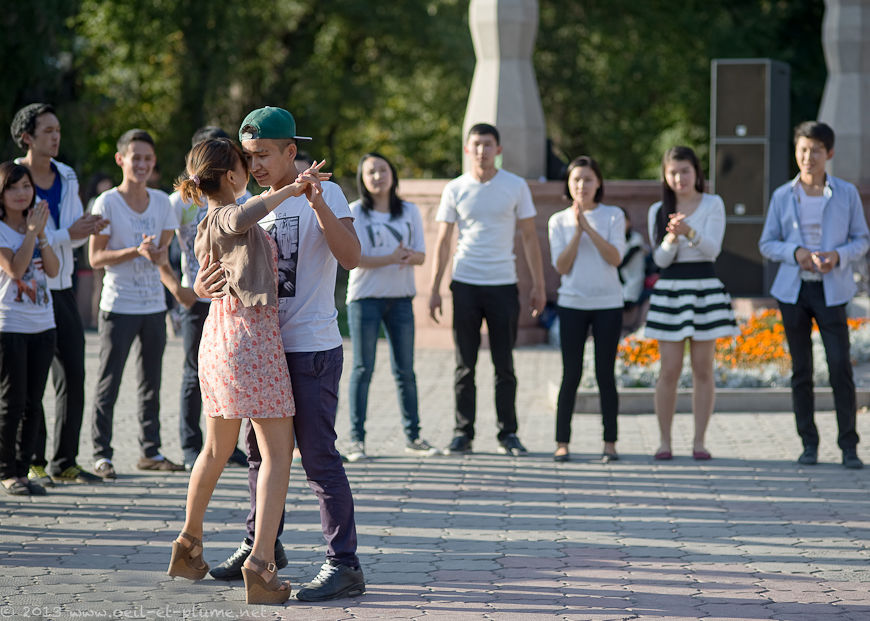
Their clothes exhibit numerous explicit Western references. Their songs and dances referring to Kyrgyzstan bear strong foreign influences, when they are not simply of the international repertoire – Russian, Anglo-Saxon and even Latino-American. Bishkek was not the place where I expected to witness a Kyrgyz couple dancing the Dominican bachata.
Osh, Southern Kyrgyzstan
Such a show could probably not be run in the more conservative southern Kyrgyzstan. In Osh town, leisure activity is obviously more traditional as Islamic culture more vivid. While local youngsters are fond of karaoke, they are less prone to public performance.
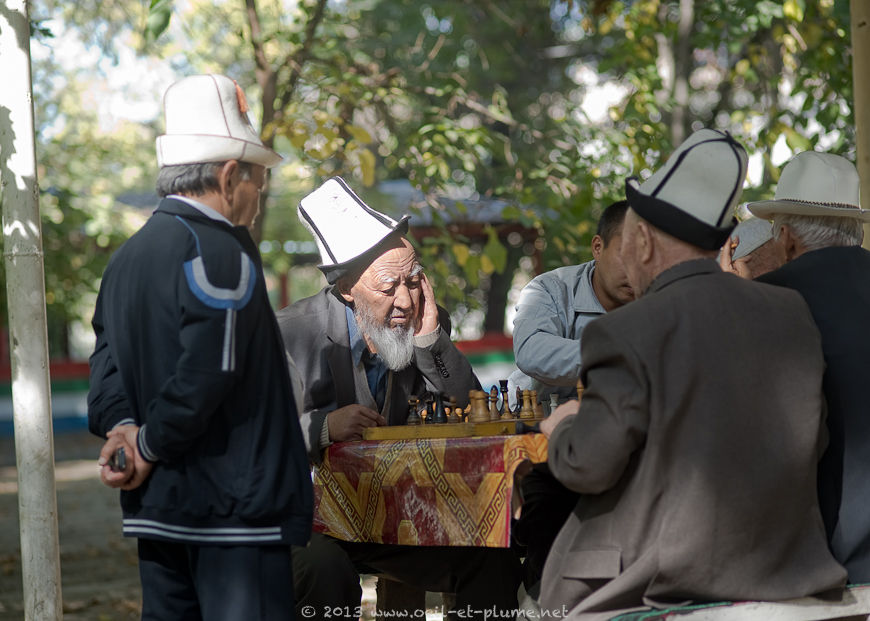

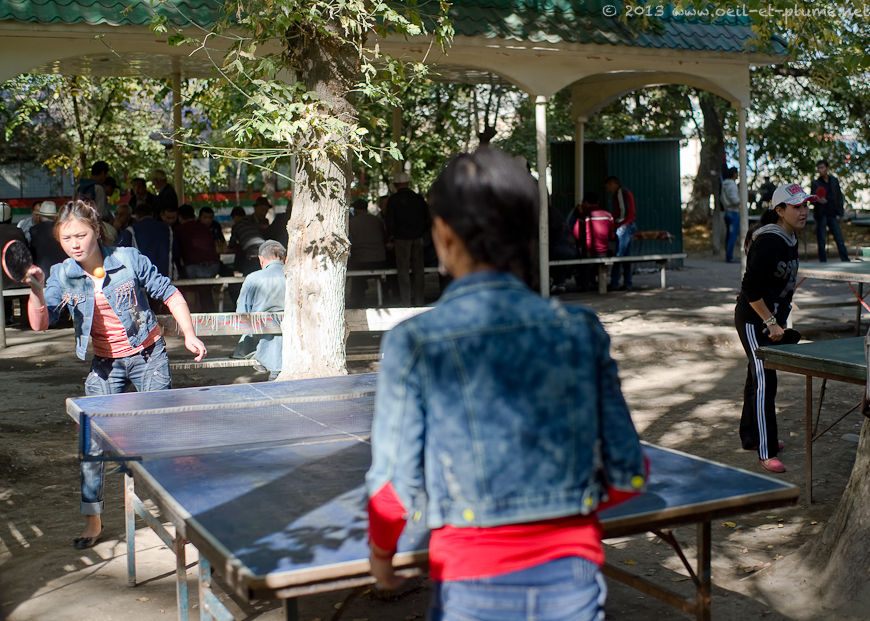
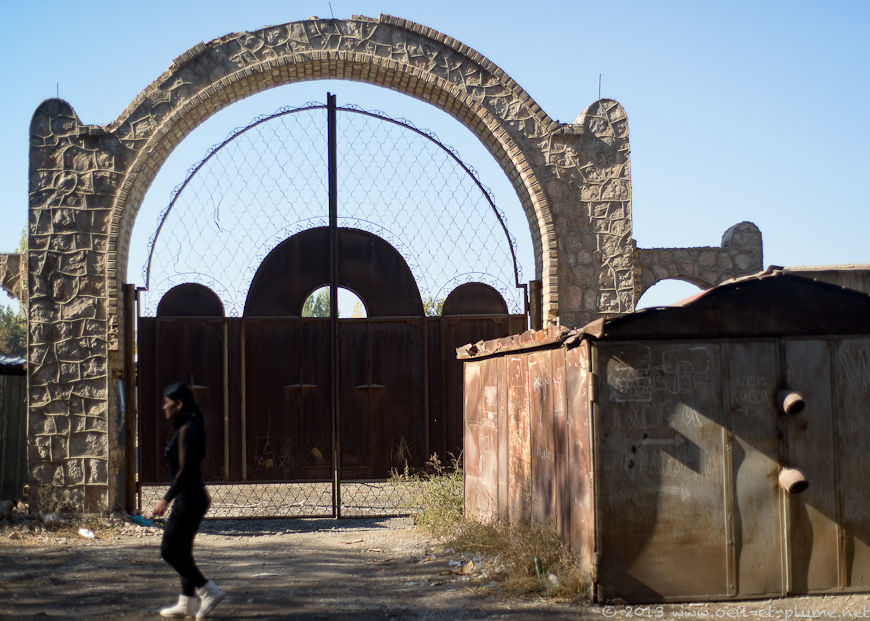
Osh is primarily a commercial town, owing to its historical role of stopover along the Silk Road between Kashgar in Sinxiang and the Kochan in modern-day Uzbekistan. Despite its dilapidated infrastructures, the Osh market remains of pivotal importance in the region today. While Chinese ware flood many non-food stands, local food remains the primary good traded.
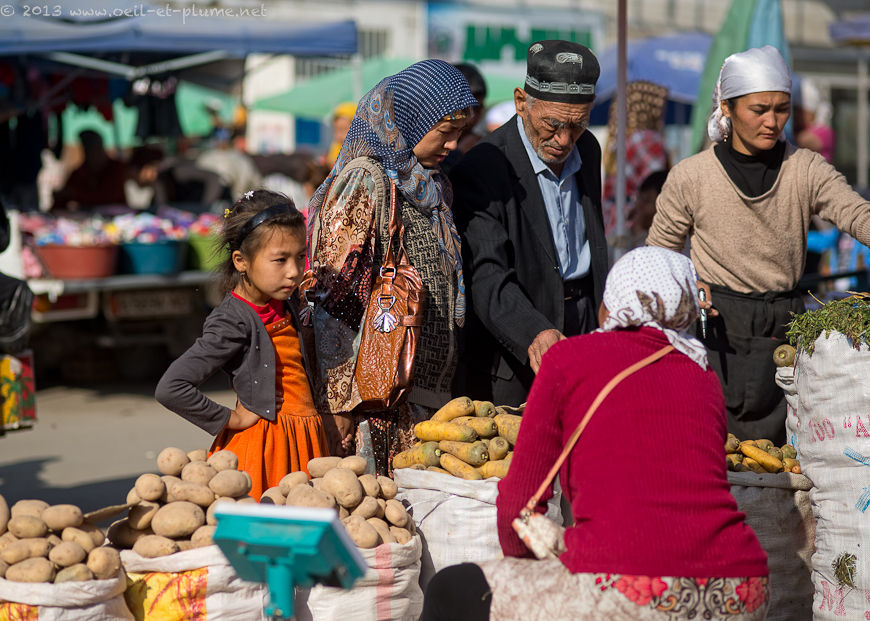


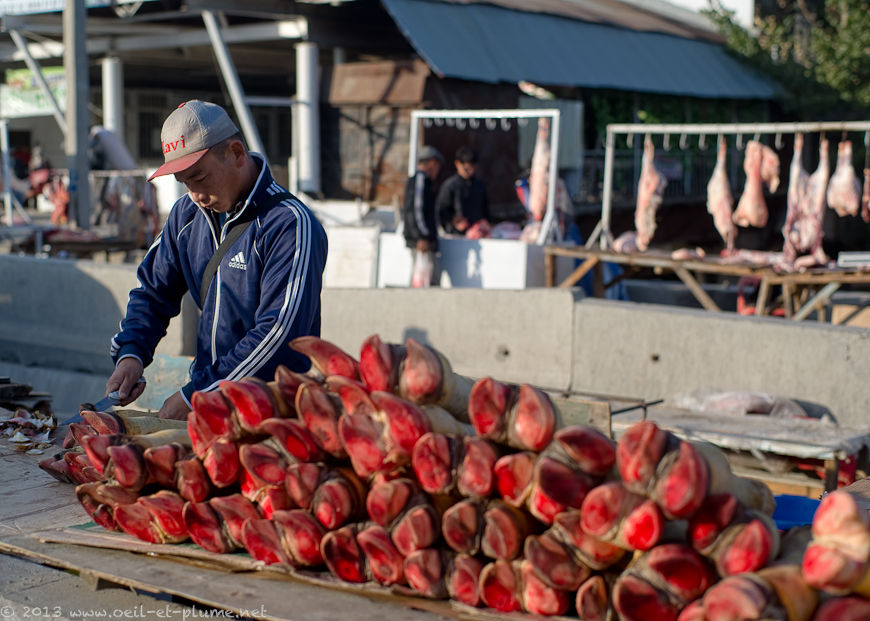
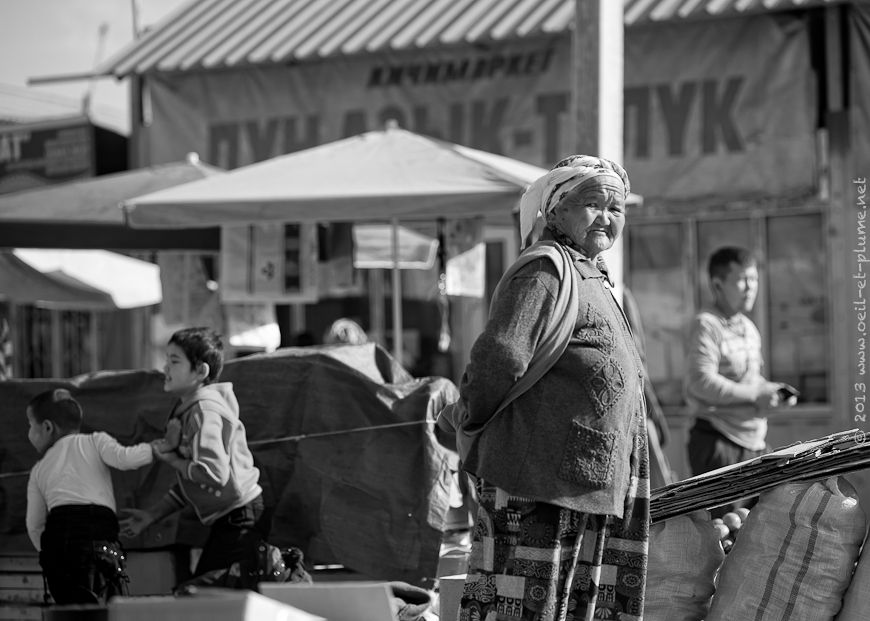
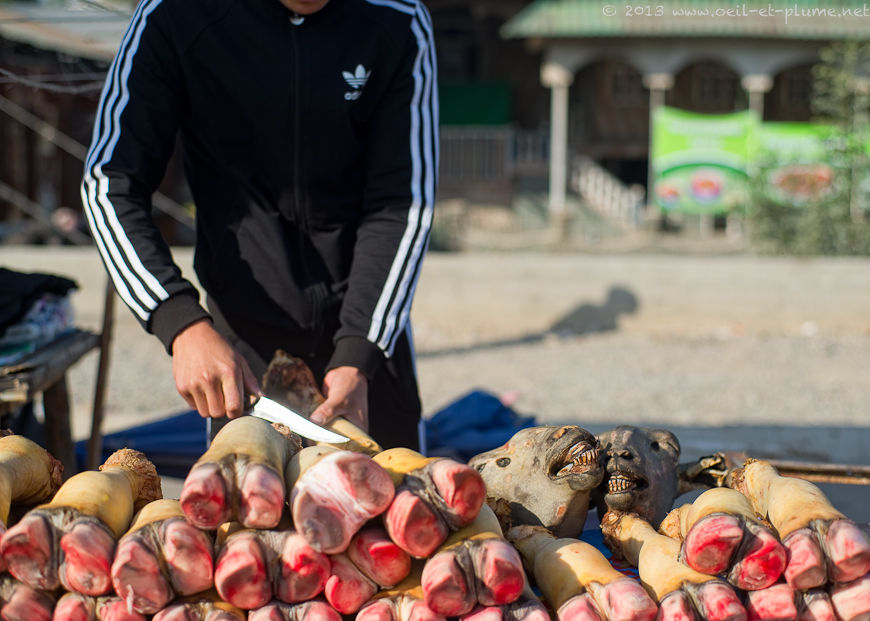
As many of us I believe, I lightened my first cigarette during my adolescence while plotting with other teenagers. The first and the last one, as one single breath was enough for me to dislike for ever the acrid taste of the smoke.
Looking for traditional non-food goods and services in Osh market, I witness another way to start smoking. Luckily, the boy in question refused the cigarette offered by the adult. Horse riding or guitar playing is sounder activity for inter-generational exchange.
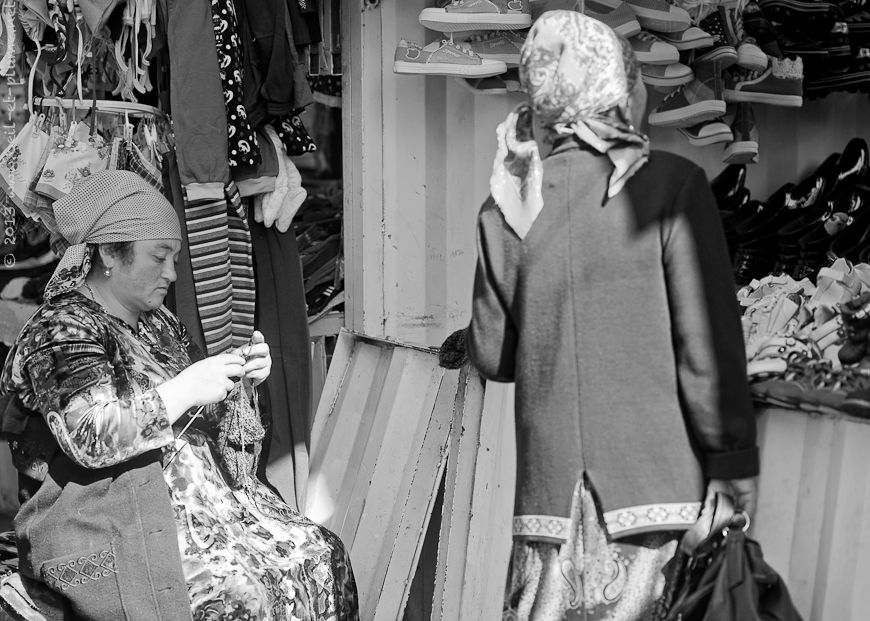
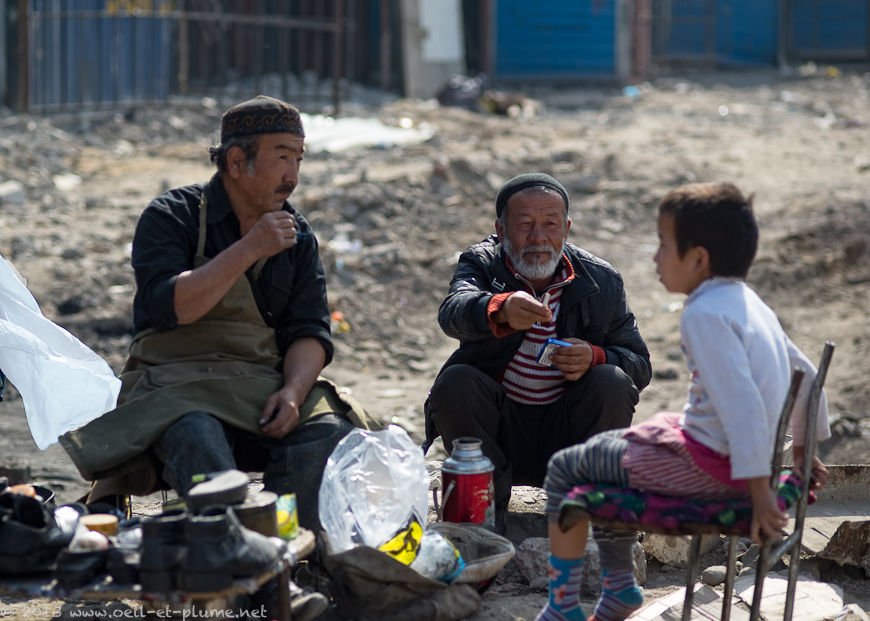
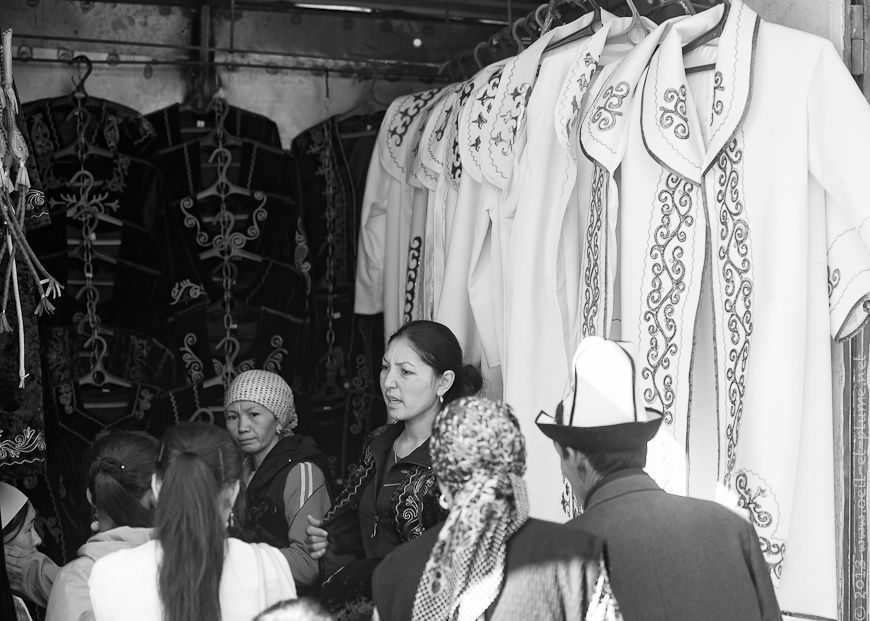



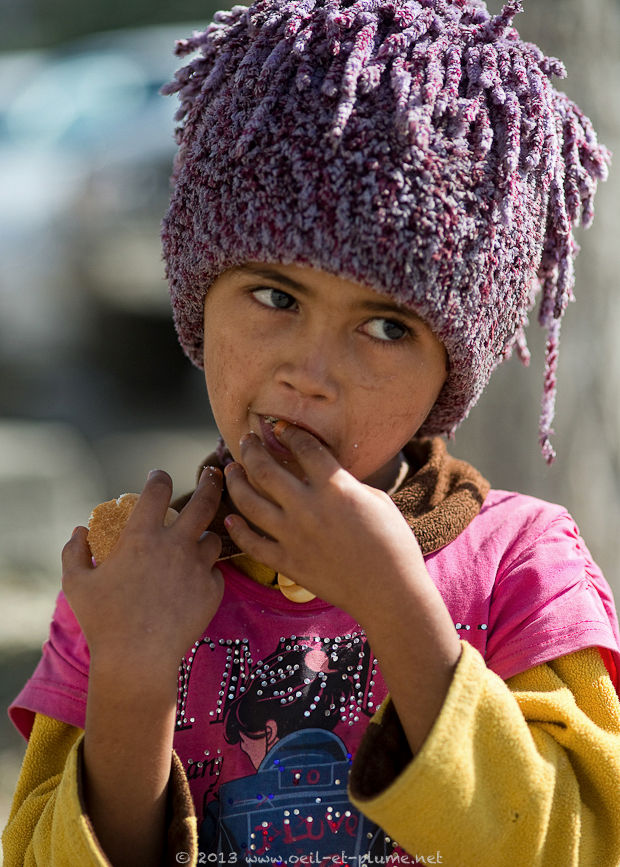
There are not that many obvious visual public references to the former Soviet Republic in Kyrgyzstan, let aside the clunky official buildings built during that period indeed. Amongst those references: Misha – the mascot bear of the 1980 Olympics Games in Moscow.
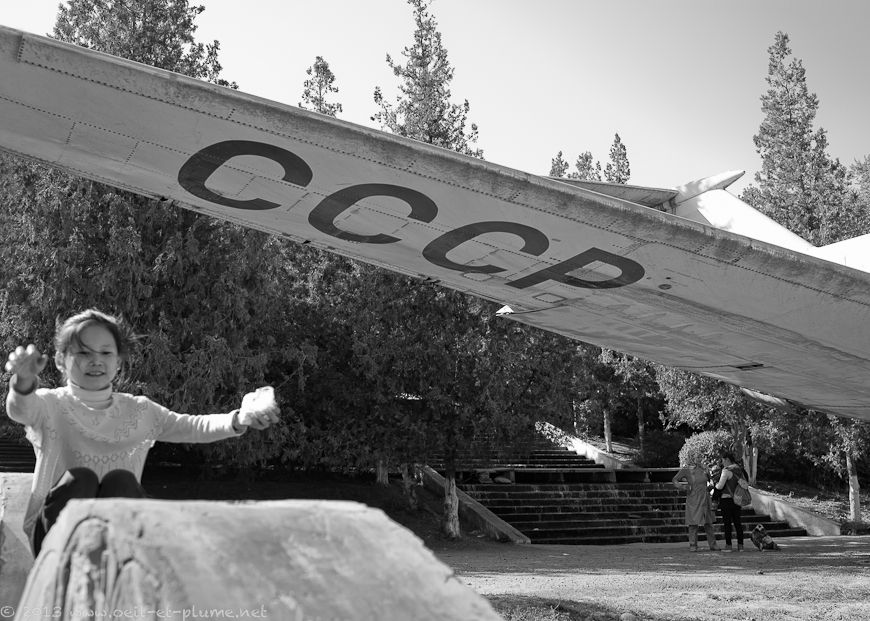

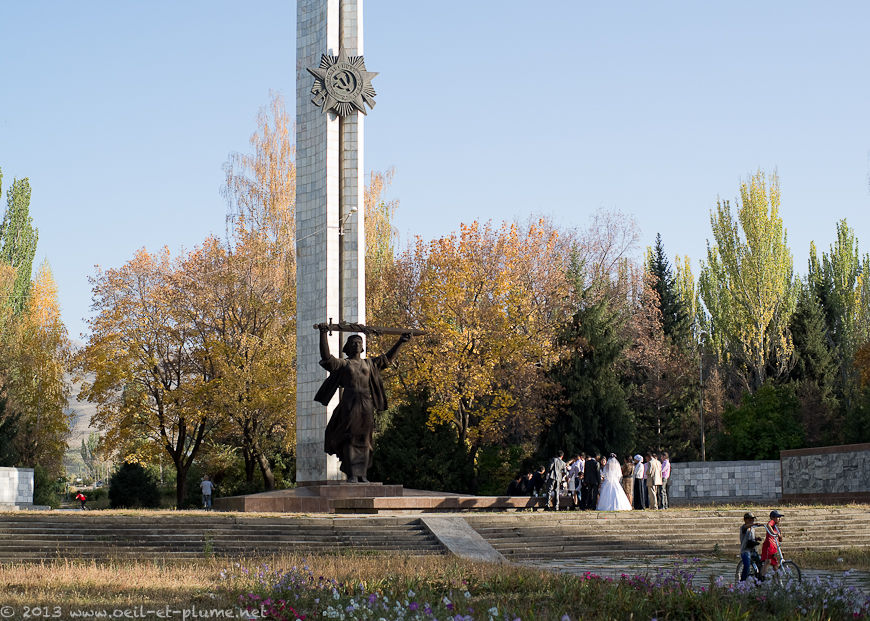
Marriage constitutes one of my favourite topics to observe and document
Traditionally, young men, helped by male friends or relatives, use to kidnap their future wife in public areas – street, markets, etc. Next the kidnapper’s family would start negotiating with the girl’s family. It is not rare that the latter would accept the marriage proposal.
The dowry to be paid by the groom’s family represents indeed an important incentive for the bride’s family. However, the amount of the dowry for a kidnapped girl is usually much less than the bride’s family would have asked for in a normal situation. Sometimes, the bride’s relatives co-plot with the groom’s family her kidnapping to push her to marry or to abort her love affair with a guy whom they would dislike.
From the broom’s perspective, kidnapping is an efficient – quick and cheap – way to get the wife of his choice. Illegal during Soviet times, the practice is officially banned since 1994. Nevertheless it still remains vivid, especially in the countryside. See the poignant video report here, shot in 2004 in various rural and urban parts of the country.
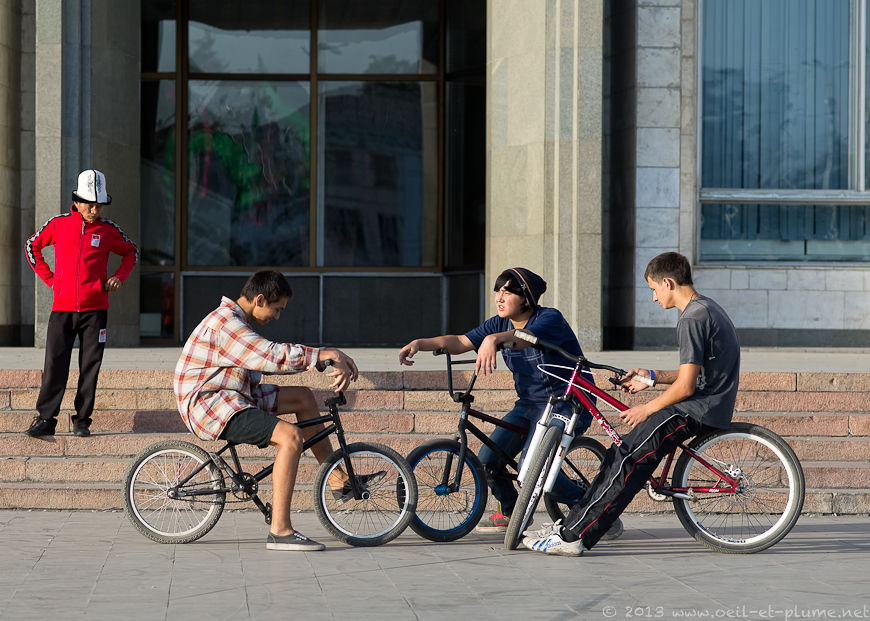
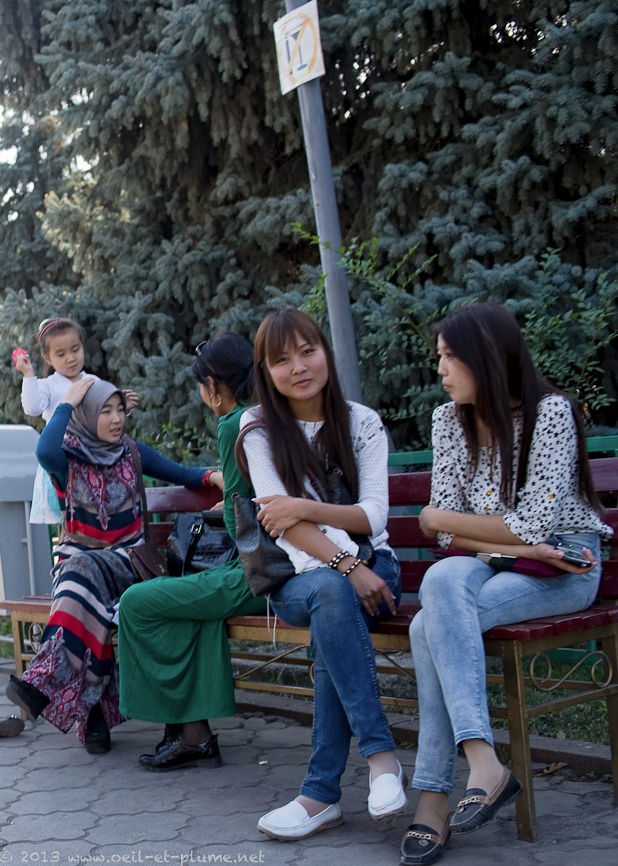
I did not witness any girl’s abduction for marriage during my recent stay in Kyrgyzstan. Nor did I kidnap any Kyrgyz bride there. In Bishkek, the style of the high-class weddings that I came across is definitively different: it is about show-off, big money and fancy cars.
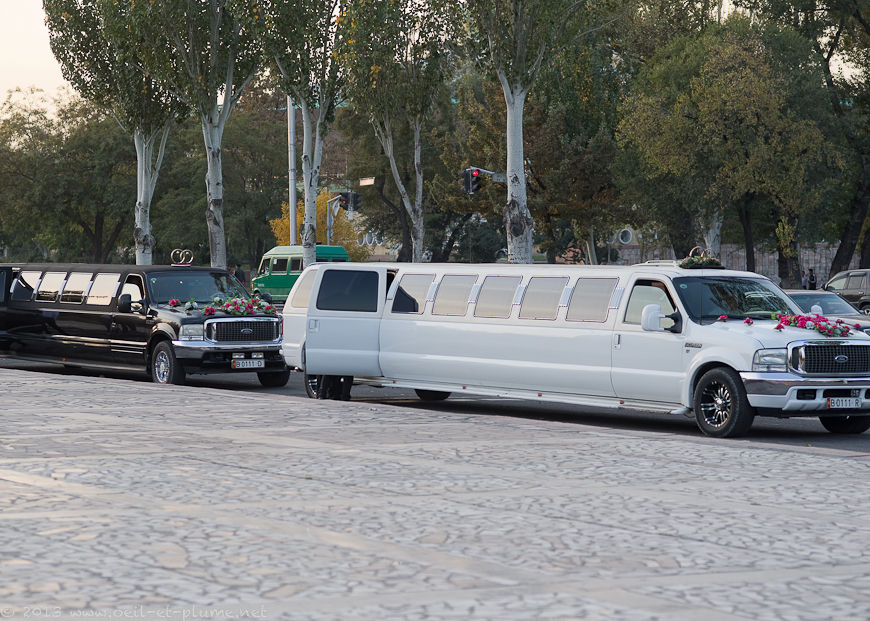
Luckily, Kyrgyz wedding can include also some romanticism. This is my wedding type, even if it is probably not fancy and mainstream nowadays. Long life to wedding horse carts!
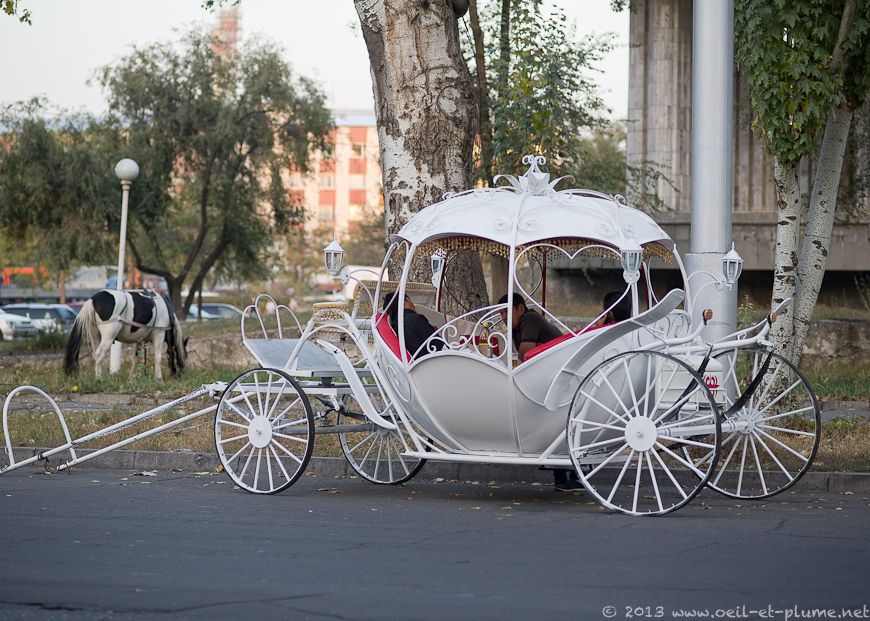
Cheers,